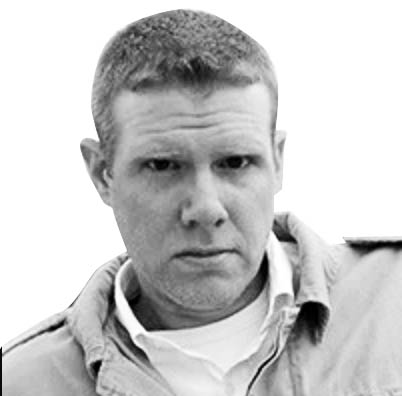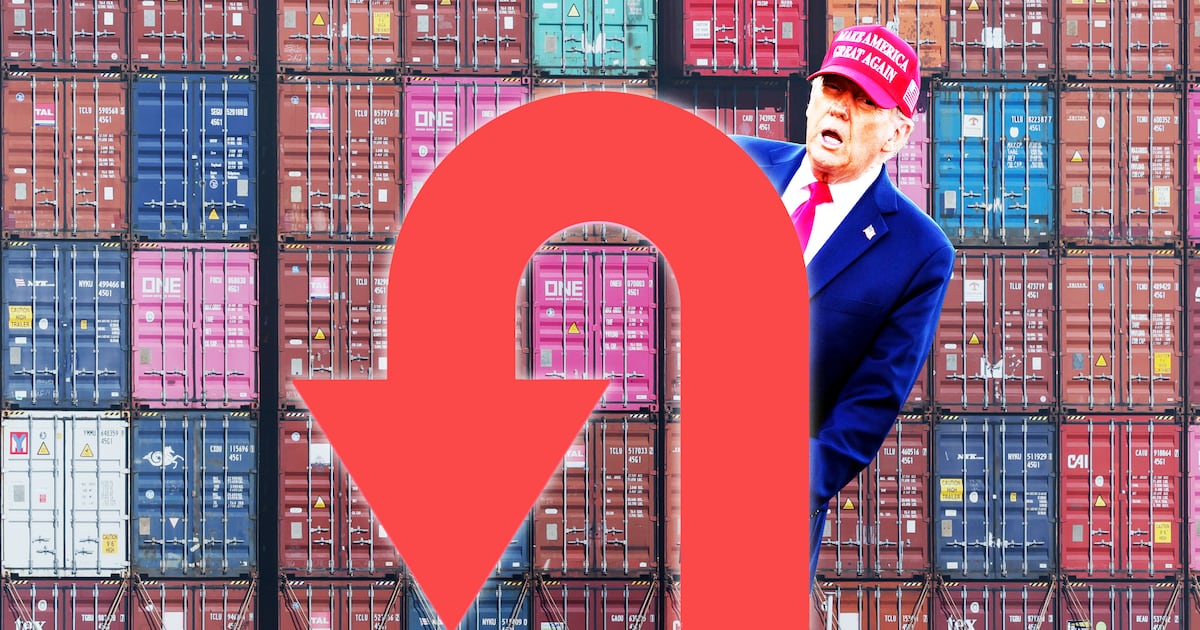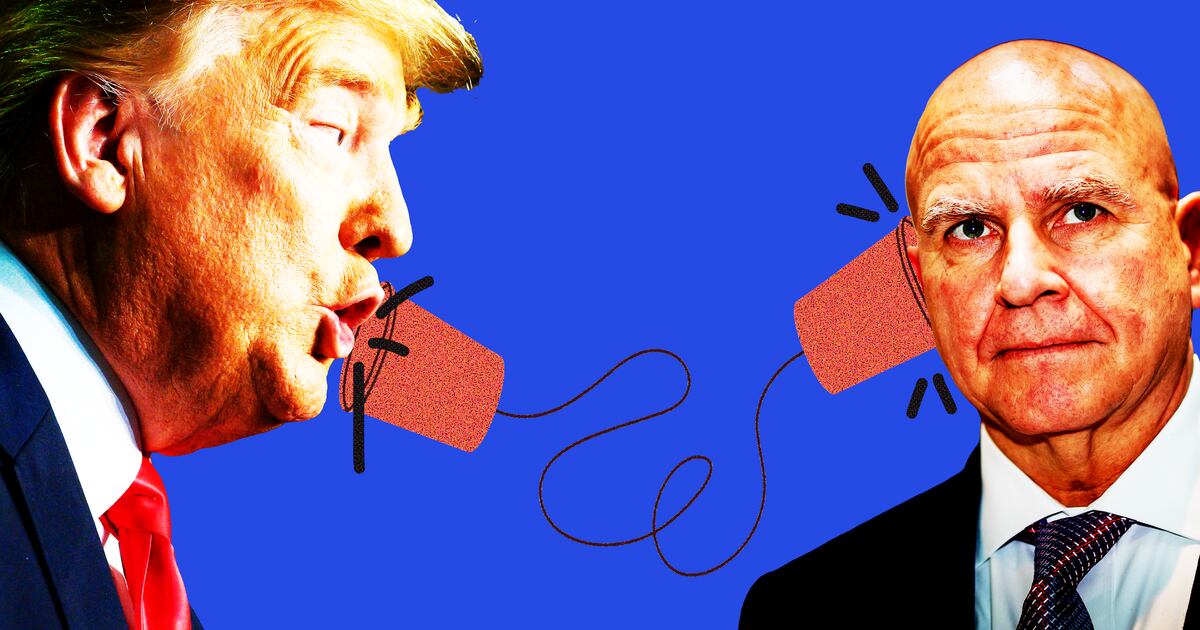About a year ago, in a remote valley in Mexico’s Michoacán state, I met with the elusive cartel capo Nicolás “El Gordo” Sierra. During our parley I made the gringo mistake of naming then-candidate Donald Trump. Instead of the planned Q and A, now it was my turn to get grilled.
“What does Trump have against Mexico?” El Gordo (“The Fat One”) growled at me in Spanish. “Will he really build this wall?”
We were sitting in a grove of mesquite and thorn trees, at the hidden base camp of the cartel called Los Viagras—the name means just what you’d think—in the overcooked lowland of Tierra Caliente. Surrounded by Viagras with AK47s, who had already stripped me of cellphone and camera, a diplomatic comeback seemed best.
Mr. Trump didn’t really hate Mexicans, I tried to assure Gordo and his inner circle of cartel warriors, or sicarios, as we sat around their campfire in the woods. It was just posturing, I said: tough talk meant to please his base and intimidate everyone else.
But Gordo Sierra wasn’t so sure. He knew a little about tough talk himself, he said. Trump might be a títere, or puppet, of his party; but that didn’t mean he wasn’t dangerous. And Trump’s speeches didn’t sound like bluster. More like he meant just what he said.
What if he were here right now? I asked. What would you say to Mr. Trump?
Gordo thought about this for a long time, his men leaning in around us for the answer.
“I would tell him,” he said at last, “to be careful about pissing us off.” Gordo laughed at his own joke, and the sicarios all chuckled on cue. But it turns out the Viagras, like the rest of Mexico’s cartels, might not have much to fear from Señor Trump.
In fact, instead of bringing down the “bad hombres” south of the border, the president’s approach seems, unfortunately, to be playing right into their hands.
Balls to the Wall
Gordo was right about one thing: Trump has certainly promised a bare knuckle approach to dealing with the cartels. But will construction of the infamous wall, or even deploying U.S. troops onto Mexican soil, as he’s already threatened, really do anything to stop the Niagara of narcotics pouring across the southern border? Or weaken El Narco’s death grip on both U.S. addicts and the Mexican state?
Let’s start with the wall.
From the Ming Dynasty to Hadrian, from East Berlin to modern Israel, history tells us that “great walls” don’t work, or that they have consequences that aren’t those desired. As the poet Robert Frost put it:
“Before I build a wall I’d ask to knowWhat I was walling in or walling out,And to whom I was like to give offense.Something there is that doesn’t love a wall,That wants it down.”
A third of our border with Mexico already is “protected” by walls and fencing. And that hasn’t turned out so well, either.
Clever contrabandistas can lob baled narcotics over even the highest of barriers, using that ancient wall-thwarter, the catapult. Or they can go under by digging tunnels, for which they are famous. Cleverly disguised trap cars, with false fuel tanks or floorboards, make mass detection at legal checkpoints a pipe dream.
But those are the hard ways. Lazier smugglers often just bribe their way across the frontier, paying off U.S. border guards and Homeland Security officials as they go.
So, if its construction isn’t grounded in logic, or the real world of law enforcement, why do Trumpheads love the wall? For the same reason their cheerless leader does: It sounds good in speeches, and makes a handy symbol.
And that mindset is par for the Drug War course, which has never really been about battling America’s addictions, or curbing the abuse of narcotics at the source. Just as Prohibition did nothing to stop—and perhaps even helped glamorize—the speakeasy fiestas of the Roaring ’20s, so the post-Nixon era has seen illegal drug use explode in the U.S.
Now, as in Gatsby’s day, the favored strategy is to go after the suppliers. And primarily for ideological reasons, instead of rational ones. Religious fanaticism by way of the Temperance movement gave us Prohibition, just as racism and xenophobia lurk behind Trump’s attack on immigrants, as well as the overall war on drugs in its current form.
With all the focus on supply, the demand side of the equation gets far less press from the Trump White House—perhaps because it makes for less glorious speechifying. Even when top officials have directly called for a focus on reduction in U.S. demand for drugs, via treatment and rehab programs, they’ve been largely ignored.
U.S. Secretary of Homeland Security John Kelly recently addressed Congress on this very topic, calling the supply-side-only emphasis “embarrassing.” Kelly also urged the House to “get into the business of drug-demand reduction” because “that’s what’s killing our folks.”
Lesson learned? Apparently not, as the new GOP health care bill actually eliminates coverage for addiction treatment.
Mr. Trump claims to be a great businessman. Yet he seems unable to understand the simple logic of supply and demand behind this issue. As long as there are vast profits to be made from U.S. consumers, someone in Mexico will find a way to get drugs to them. And no wall, no matter how high or “beautiful,” is going to keep them out.
Criminal Insurgencies
When a syphilis-ridden Al Capone was finally arrested in the spring of 1929, the government could crow that “America’s Most Wanted” had at last been caught. At the same time, the impact on Capone’s Chicago Outfit—and the rivers of liquor they distributed throughout the nation—turned out to be exactly zilch. They went merrily on their rum-running way, while Scarface Al rotted behind bars.
Which brings us to El Chapo. Like Capone, Joaquín “Shorty” Guzmán was also America’s most-wanted man. And now that Chapo has been caught and extradited to the U.S.—absolutely nada has changed in relation to the flow of illicit substances into the States.
Meanwhile, in Mexico, infighting between Chapo’s heirs abhorrent is turning the state of Sinaloa into a war zone.
And it’s not just Sinaloa. The vaunted “Kingpin strategy,” so beloved by the U.S. Drug Enforcement Administration and Mexican officials, has proven itself to be a disastrous failure across Mexico.
Following in the footsteps of guerrilla insurgencies across the globe, the cartels have responded to this “behead the hydra” approach by adopting new, horizontal command structures, much like al Qaeda. They’ve also decentralized, scattering factions into rural regions, far from large urban centers where they can be tracked easily.
The result is that whole swaths of the country, such as the Viagras-controlled stretch of Tierra Caliente, are now run by “gangster warlords” like Gordo. These bandit chieftains carve out their fiefdoms, which they call plazas, and defend them without mercy against rivals, law enforcement, and even independently organized militias that seek to test their power.
The cartels have also stepped up their paramilitary terror tactics, including attacks on military convoys, shooting down helicopter gunships, and proliferating ISIS-style decapitation videos to demoralize opponents.
The growing power of these criminal insurgents—and their internecine struggles for dominance—have caused Mexico’s Drug War death toll to spike by a third so far in 2017, with some 2,000 cartel-related murders in January alone. Statistics also show a 22 percent jump in drug-fueled homicides from last year, and more than 30 percent from two years ago, indicating this is not a passing trend.
Most Americans hear little of the open cartel warfare that goes on in places like Michoacán, Guerrero, or Veracruz. This counternarrative—that U.S. policies are contributing directly to the breakdown of law and order in our neighbor to the south—is not one you can expect to hear from the White House anytime soon.
Ideology vs. Rationality
Instead of seeking new strategies or tactics for dealing with America’s drug problem, Trump seems poised to ramp up the same old hardline policies. And targeting the figureheads atop the cartels is just part of the overall cognitive dissonance.
For example, the Trump administration promises a crackdown on “opioids”—by which it apparently means heroin users. But in truth the biggest purveyor of opioids in the U.S. isn’t cartels from down south. That dubious distinction actually goes to the pharmaceutical industry here at home.
New high-powered pain killers have cornered the market on opioid addiction, and their chronic users now outnumber old-fashioned smack junkies by a three to one margin, according to the American Society for Addiction Medicine (PDF). For many caught in the cycle of opioid abuse, heroin is a back-up option when they can’t get painkiller prescriptions filled.
Which isn’t to say we don’t have a growing cartel crisis in our own backyard. Using advanced new procedures for implanting human “drug mules,” Mexican mafiosi have now penetrated into places like Indiana, Minnesota, and North Carolina.
These underground networks can then funnel their vampire profits right back down south, making for a self-perpetuating “farm to arm” industry.
According to insiders, law enforcement alone is not enough to make these pervasive, deeply rooted criminal cells go away. As the attorney general of Ohio lately observed, “We can’t arrest our way out of the problem.”
That’s partly because the plaza business model is no longer unique to Mexico. When authorities do manage to bust a cartel network in the States, there’s always another group waiting to take over the regional market.
Even worse, POTUS and his cabinet are set to roll back some of the limited but important gains we’ve made in undermining cartel power.
One of our few Drug War victories has come in the form of curbing the syndicates’ cannabis profits, as the U.S. Border Patrol reports seizures of illegal marijuana are down to their “lowest level in a decade”—falling by at least 39 percent over the last five years.
Homegrown ganja, in other words—now legal for recreational purposes in eight U.S. states and D.C.—can make a sharp dent in cartel income.
But the new administration wants to change all that. Attorney General Jeff Sessions is hinting strongly that a crackdown is coming against legalized weed, despite the estimated $1.3 billion earned in taxable revenues.
Ideology trumps reason once again.
Solution Evolution?
Given that the Mexican army is openly seeking an exit strategy from its fight against the cartels, and with two thirds of Americans also ready to call the Drug War quits, you might think the Trumpites would be hunting new solutions to this very old problem. But you’d be wrong.
Alternatives like decriminalization, cutting opioid prescriptions, and affordable treatment programs in the U.S.—or anti-poverty initiatives in Mexico, so as to give young people an alternative to the narco lifestyle—just don’t seem to be on the table. At least not yet.
And all of that suits next generation warlords like El Gordo Sierra right down to the sun-scorched ground.
“Maybe Trump is not so bad after all,” the cartel commander told me after a lengthy debate about El Donaldo’s ironfisted agenda.
“Truth is,” said Gordo, “he sounds just like one of us.”





